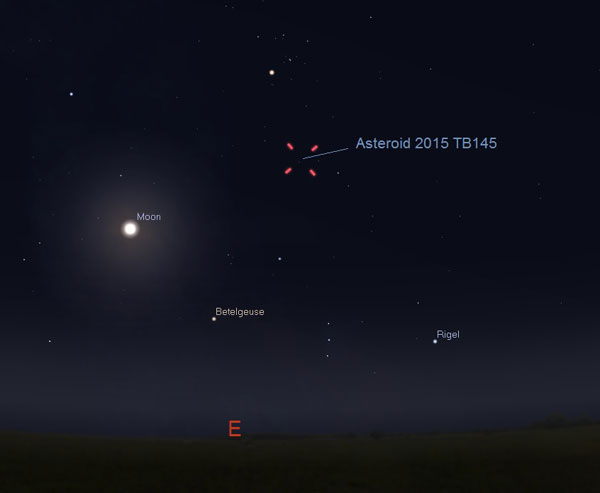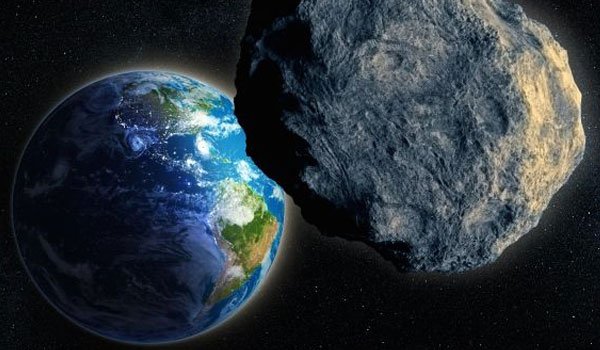But scientists say there is no need to be scared, even on Halloween. The space rock, travelling at around 22 miles per second, will remain further away than the moon.
There is no chance of the asteroid hitting the Earth for the next 100 years at least, and it is not included in the European Space Agency’s (ESA) official list of potentially threatening NEOs (near earth objects).
The asteroid, nicknamed “the Great Pumpkin” and “Spooky” but technically known as TB145, is an estimated 1,300ft wide – 20 times bigger than the meteorite that tore across the Russian sky and exploded over Chelyabinsk in 2013, shattering windows with shock waves and debris that injured more than a thousand people.
Dr Detlef Koschny, who heads the agency’s NEO tracking team said asteroid emphasised the need for vigilance: “The fact that such a large near-Earth object, capable of doing significant damage if it were to strike our planet, was discovered only 21 days before closest approach demonstrates the necessity for keeping daily watch of the night sky.”
TB145 was spotted by astronomers in Hawaii on 10 October. It is due to fly past Earth at around 5pm UK time, on 31 October.
Very little is known about the object, other than what scientists have been able to infer from observations made so far.
Dr Marco Micheli, an astronomer from ESA’s NEO Co-ordination Centre in Italy, said: “The diameter of about 400 metres has a large uncertainty, as is usual in cases of any object for which we do not yet know details, such as its composition.”
More accurate information will be obtained once the object has been tracked by radar, he added.
Scientists estimate there to be around 5,000 NEOs of similar size hurtling through Earth’s region of the solar system, a significant number of which have not yet been discovered.
To watch out for them, ESA is developing automated “fly-eye” telescope technology which should be ready for testing at the end of next year.
“Objects of this size are often spotted by automated surveys,” said Dr Koschny. “The only difference is that, being so large, they are often found when they are quite far away, out to 2.5 times the sun-Earth distance, and not just before a close approach, as in this case.”
(theguardian.com)







